If you are a fan of deck-building games but looking for something a little bit different, then you are in the right place. Tamarak Trail is a deck-building roguelite with a twist. I had the pleasure of getting to try it out. Let’s jump in to see if it’s worth rolling the dice on.
In this review, I am going to cover the following:
Gameplay
There isn’t a whole lot going on as far as a story goes, so let’s jump right into the gameplay. Tamarak Trail is similar to the standard roguelike. You fight enemies for loot and get as far as you can on the map before you die. Except this time it is the sides of dice that you are collecting rather than cards. Instead of building a deck, you are changing out the faces of your dice to manipulate each roll. I’ll explain more on how it works in a bit. First, let’s start at the beginning of your hero’s journey.
The Lodge
At the beginning of each journey, you will start at the lodge. There are two things to do here. The first is to spend your Garmonbozia, or metacurrency, to open rooms in the lodge. Each room unlocks effects or events for future runs. The second thing is to choose your hero to start your journey on the trail.
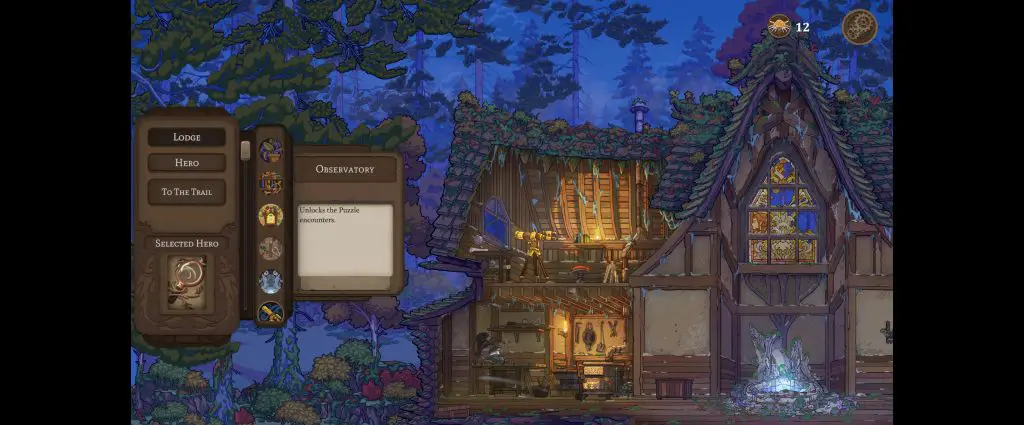
Heroes
There are three different heroes to choose from. The first hero, the Detective, is the only character unlocked at the beginning of the game. The Magician and Tracker must be unlocked with Garmonbozia before they can be played.
Each character has a unique playing style with different sets of dice to choose from. After each run on the trail, the hero you played will gain experience. At each level, a new die face will be unlocked for you to come across on your future runs with that character. This encourages players to pick one hero and stick with them to try to unlock all their abilities before moving on to the next character.
Map
As with most roguelike games, Tamarak Trail has a procedurally generated map. Although the biomes are always in the same order. The map consists of 5 different nodes. Those nodes are as follows:
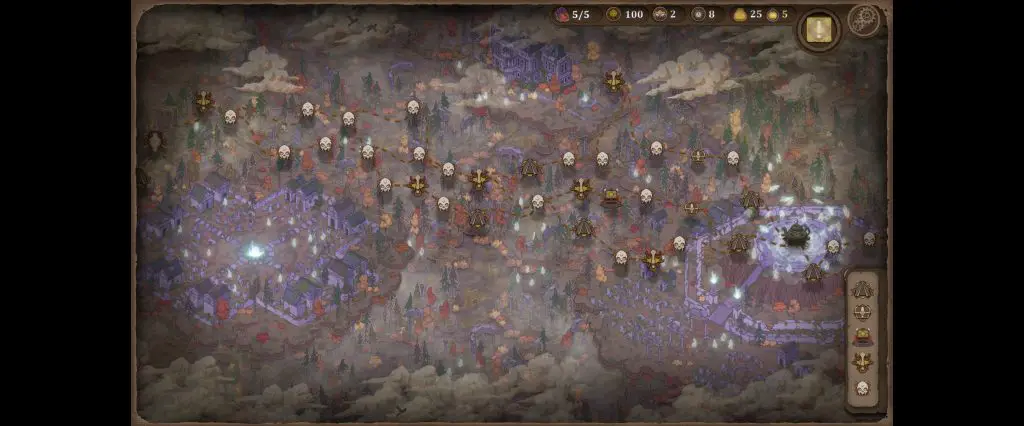
- Rest – Recover a wound and gain temporary resolve.
- Core Chest – Pick 1 of 3 cores to put in your dice for added bonuses.
- Market – Use your gold to purchase new faces for your dice.
- Event – A random event that always has multiple choices to choose your own fate.
- Combat – Battle the evil creatures on the trail for loot.
The map follows a tree-branching structure that does not allow you to go backward to missed nodes. It is so randomly generated, though, that it can be hard to see how the path branches to and from certain nodes until you are at them. The next options to travel to are only highlighted once you have resolved your current node.
Die Forge
The die forge is where Tamarak Trail really stands out. At any time on the map screen, you can click on the die in the upper right-hand corner. This will open the die forge. From here, you will be able to see your inventory of dice, cores, and die abilities (die faces).
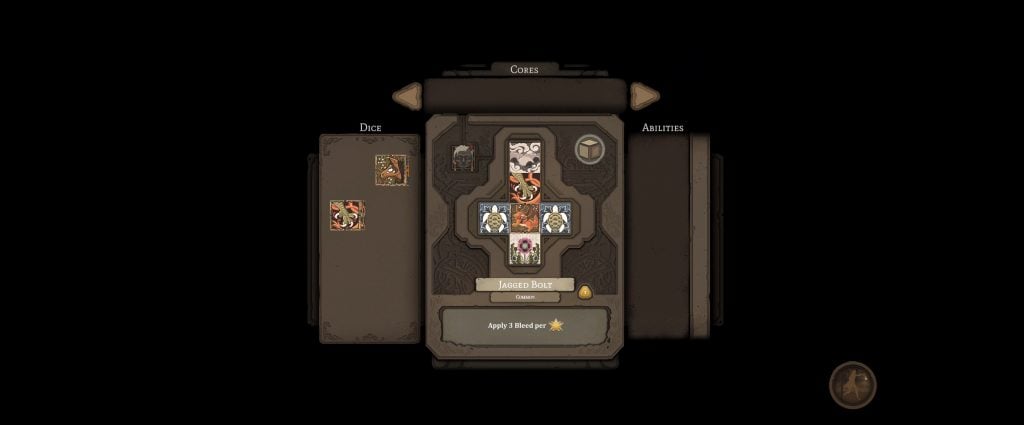
By placing a die in the middle of the screen, it flattens out so you can see all the faces at once. You can also see which core is in the die, if any. This breakout-style view of the die allows you to easily review the ability of each face and which side it will flip to if applicable. Faces can be easily swapped out between each node if desired.
One of the things that Tamarak Trail encourages players to do is experiment with their dice. They also reward players for finding combinations such as infinite loops. Since the breakout view makes it simple to see which side the die will flip to after an ability, it is easy to line faces up to have 3 or 4 all triggered in a row. The most fun comes from trying to build a perfect die that loops to all 6 faces from a single roll.
With all that discussion about dice, let’s talk about how to actually use them in the game.
Combat
So, Tamarak Trail has replaced their cards with dice. At this point, you are wondering what that actually looks like in combat and, of course, if it is any good compared to cards. Let’s start off with the health system, which is strongly affected by the dice rolls.
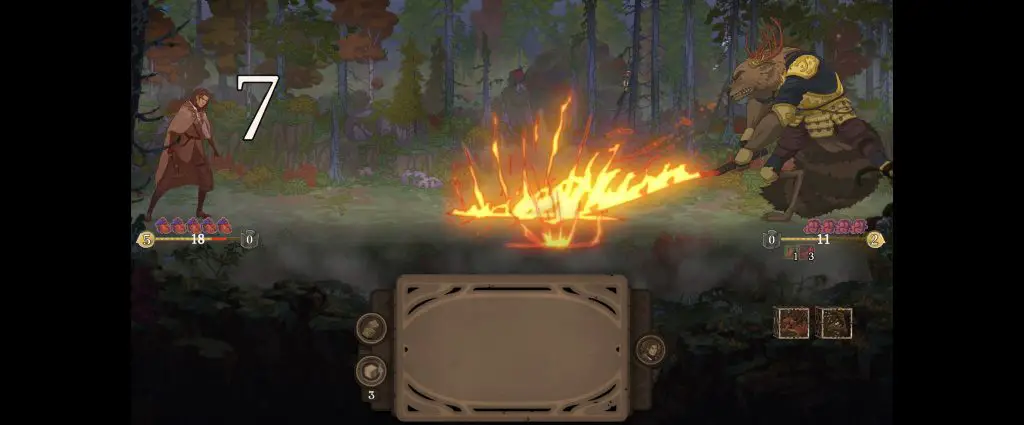
Health
In Tamarak Trail there are 2 levels of defense before your hero takes a wound. The first level to take damage from an opponent is your shields. The second level is your resolve. If the enemy can get past both of those, then your hero takes a wound. 5 wounds, and the run is over. Shields work the same as most games. They are gone once depleted from enemy attacks. Shields do not carry over into future turns. Resolve is where things get interesting, though.
Resolve
Resolve not only works as a level of protection from taking wounds, but it is also your resource for rolling dice. Yes, that’s right. Rolling too many dice could literally kill you. You can’t take wounds from rolling, but you can lower your defenses enough that the next enemy hit could end your run.
Each die face has a resolve cost to use the ability. That cost will increase if the dice bump into each other when rolled. However, some abilities benefit from the number of dice they bump into, so keep that in mind. It’s all about deciding which dice to use and how many.
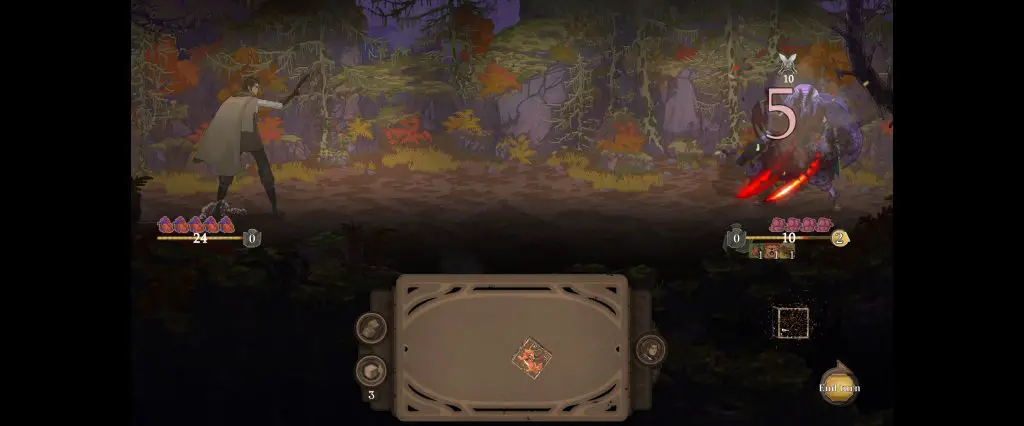
Your hero does restore some resolve at the start of each turn. That amount is five plus the number of dice you did not use that turn. However, this can be reduced by effects such as drowsiness. Other effects that deal damage at the start of your turn, such as poison, will reduce your resolve, as well, before you can use it. Poison can also cause a wound if you don’t gain any resolve due to something like drowsiness, so don’t let your negative status get out of hand.
Rolling
Each turn you will roll your dice. There are two ways to roll. There is an autoroll button that will randomly roll the dice for you. The biggest downside to this option is that you have zero control and the dice seem to always collide. The other option is to click, flick, and let go of the dice one at a time. This gives you a bit more control on where the dice land on the table.
Rolling the dice manually is quite enjoyable and allows for a little bit of creativity. You can control which dice bump you need. You can also try throwing a die-hard at another one to get it to roll to another face. If you still haven’t gotten the sides you need, there are a limited number of rerolls for each run. The reroll button resets all the unused dice so that you can roll them again.
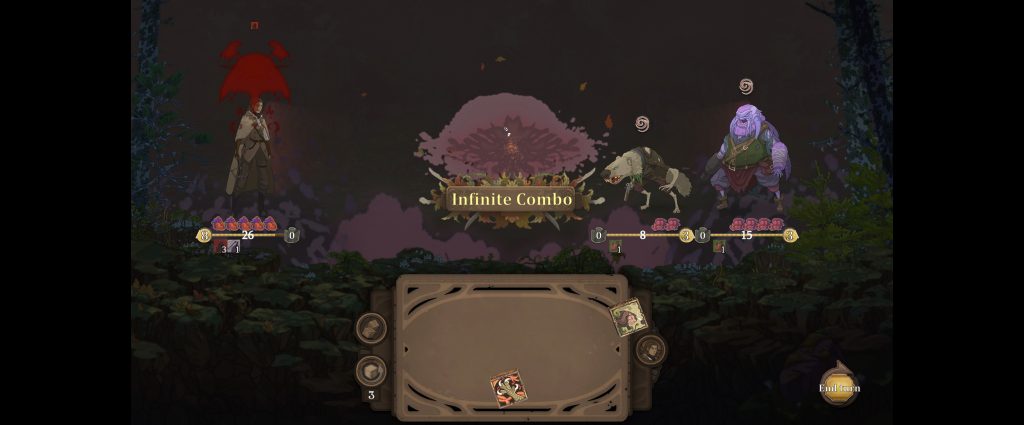
Enemies
There is a set number of enemies per biome in Tamarak Trail. They are specific to each biome and have unique abilities. All enemies have the same levels of defense as the player. You must break through their shields and resolve before wounding them. They also gain resolve at the start of each turn but do not consume it when using their abilities.
At the end of every biome is a challenging boss. Their combat style is unique to them and will test the player to see if they have constructed a powerful enough set of dice. Many will also force the player to change their usual style of play to adapt to the abilities of the boss.
This can also be said for the encompassing abilities per biome. The enemies in each biome have an active ability specific to that location. For example, all enemies in one of the later locations can damage the player for each wound they suffer. This forces the player to slow down so that they don’t take on too much damage of their own.
Victory
If you set your dice up correctly, then most of the enemies on the trail will be no problem at least at the beginning. After finishing a battle, you will be rewarded with some gold to spend at the market. You will also have a choice from 3 die faces before moving on to the next node.
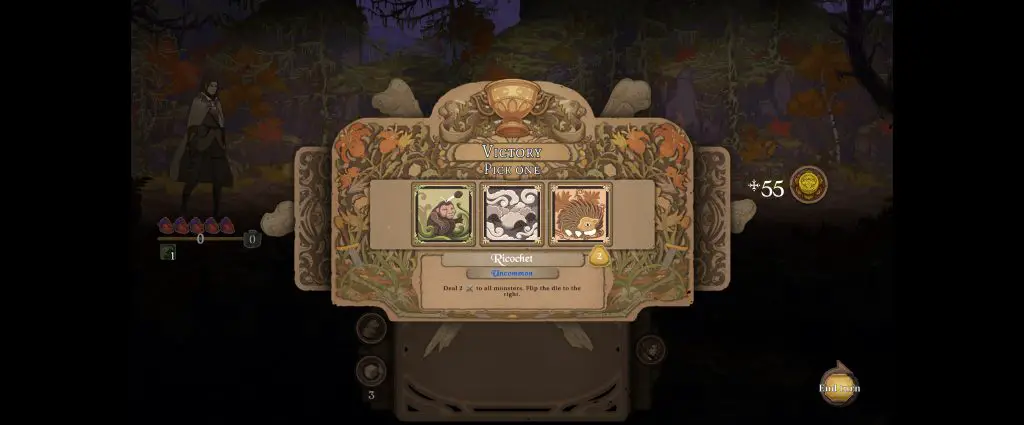
Conclusion
Tamarak Trail provided an interesting twist to the deck-building genre. Was it enough to make it worth picking up, though? It’s tough to say. I really enjoyed the content there. I spent a lot of time trying to create the perfect infinite loop for each run. The dice rolling was fun both with a mouse and a joystick on my Steam Deck. There wasn’t really any story after the opening cutscene, though, and there were only a handful of enemies per location.
All of the enemy creatures looked fantastic. The ghosts holding up different props were my favorite. However, There wasn’t a lot of variety in the attack animations. Both for the player character and the enemies. Speaking of looks. I loved the market. The live band and the fact that it is so big you have to scroll side to side is awesome. I just wish there was more to do there than just the two shops to click on.
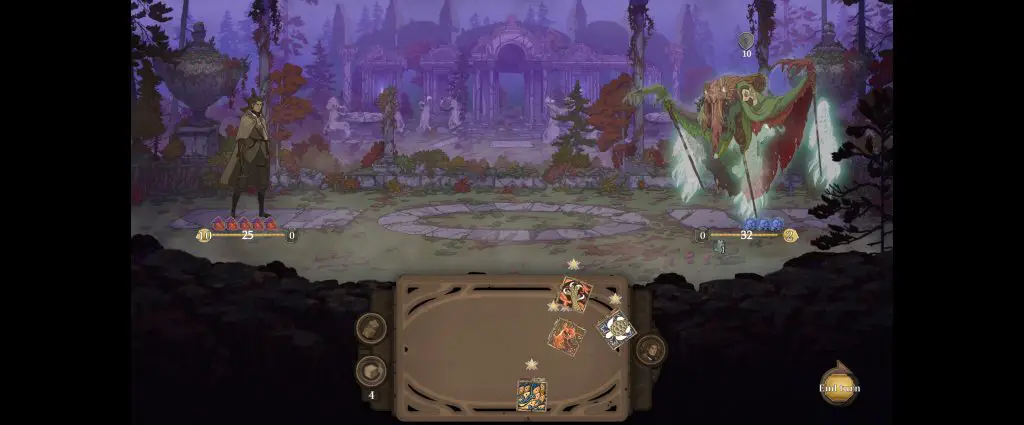
If you are a diehard player of deck-building games and want an interesting take on the genre, then I would say give this one a try. However, if you are looking for something with a lot of depth, Tamarak Trail might not be the game for you. Or at least not yet. The developer is actively keeping up with the community and updating the game. They have already added new content, including some community-suggested content. It is nice to see that they are active. Hopefully, they will continue adding a lot more contact down the road.
The review key for this game was kindly provided by the developers at Yarrow Games









